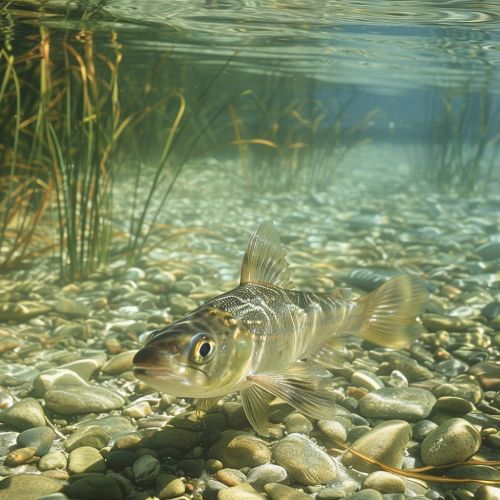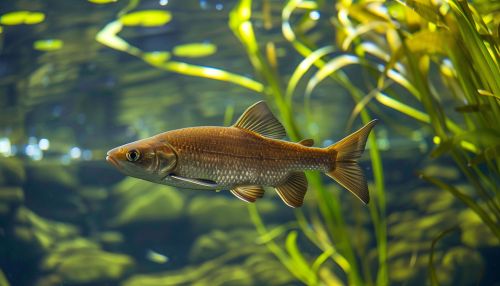Bioaccumulation
Introduction
Bioaccumulation refers to the process by which certain substances, such as heavy metals, pesticides, or other organic pollutants, accumulate in an organism over time. These substances are typically absorbed at a rate faster than they are metabolized or excreted. Bioaccumulation can occur in various ecosystems and affects a wide range of organisms, from microorganisms to large mammals, including humans.
Mechanisms of Bioaccumulation
Bioaccumulation occurs through several mechanisms, including direct absorption from the environment, ingestion of contaminated food or water, and dermal absorption. The rate and extent of bioaccumulation depend on the chemical properties of the substance, the characteristics of the organism, and environmental factors.
Absorption
Substances can be absorbed directly from the environment through the skin, gills, or other membranes. For example, fish can absorb mercury from water through their gills. The efficiency of absorption depends on factors such as the concentration of the substance in the environment, the duration of exposure, and the permeability of the organism's membranes.
Ingestion
Ingestion is a primary route of bioaccumulation for many organisms. Contaminants present in food or water are ingested and then absorbed into the bloodstream. For instance, DDT, a well-known pesticide, accumulates in the fatty tissues of organisms that consume contaminated prey.
Dermal Absorption
Some substances can be absorbed through the skin. This route is particularly significant for amphibians and other organisms with permeable skin. For example, polychlorinated biphenyls (PCBs) can be absorbed through the skin of aquatic organisms.
Factors Influencing Bioaccumulation
Several factors influence the rate and extent of bioaccumulation, including the chemical properties of the substance, the characteristics of the organism, and environmental conditions.
Chemical Properties
The chemical properties of a substance, such as its lipophilicity, hydrophobicity, and persistence, play a crucial role in bioaccumulation. Lipophilic substances tend to accumulate in fatty tissues, while hydrophobic substances are less likely to be excreted and more likely to bioaccumulate.
Organism Characteristics
The characteristics of the organism, including its metabolic rate, age, size, and trophic level, also influence bioaccumulation. For example, larger and older organisms often have higher levels of accumulated contaminants due to longer exposure times and higher intake rates.
Environmental Conditions
Environmental factors such as temperature, pH, and the presence of other chemicals can affect bioaccumulation. For instance, higher temperatures can increase the metabolic rate of organisms, leading to higher rates of bioaccumulation.
Ecological and Health Implications
Bioaccumulation has significant ecological and health implications. It can lead to biomagnification, where the concentration of a substance increases as it moves up the food chain. This can have detrimental effects on top predators, including humans.
Ecological Impact
Bioaccumulation can disrupt ecosystems by affecting the health and reproductive success of organisms. For example, high levels of methylmercury in fish can impair their neurological functions, making them more susceptible to predators and less successful in reproduction.
Human Health Impact
Humans can be exposed to bioaccumulated substances through the consumption of contaminated food, particularly fish and shellfish. Chronic exposure to bioaccumulated toxins such as lead, cadmium, and PCBs can lead to serious health issues, including neurological damage, cancer, and reproductive problems.
Case Studies
Several well-documented case studies illustrate the impact of bioaccumulation on ecosystems and human health.
Minamata Disease
Minamata disease is a neurological syndrome caused by severe mercury poisoning. It was first discovered in Minamata, Japan, in the 1950s. The disease was caused by the release of methylmercury into the industrial wastewater from a chemical factory, which bioaccumulated in fish and shellfish in Minamata Bay. The local population, who consumed the contaminated seafood, suffered severe neurological damage.
DDT and Birds of Prey
The pesticide DDT was widely used in agriculture until its harmful effects on wildlife were discovered. DDT bioaccumulated in the tissues of birds of prey, such as bald eagles and peregrine falcons, leading to thinning of eggshells and a decline in bird populations. The banning of DDT in many countries has led to the recovery of these bird species.
Regulatory and Mitigation Measures
To address the issue of bioaccumulation, various regulatory and mitigation measures have been implemented globally.
International Conventions
Several international conventions aim to control and reduce the release of bioaccumulative substances. The Stockholm Convention on Persistent Organic Pollutants (POPs) is a global treaty designed to eliminate or restrict the production and use of persistent organic pollutants.
National Regulations
Many countries have established regulations to limit the release of hazardous substances into the environment. For example, the Clean Water Act in the United States regulates the discharge of pollutants into water bodies to protect aquatic life and human health.
Mitigation Strategies
Mitigation strategies include the use of alternative, less harmful substances, improved waste management practices, and the remediation of contaminated sites. For instance, phytoremediation uses plants to remove, transfer, or stabilize contaminants in soil and water.
Conclusion
Bioaccumulation is a complex process with far-reaching ecological and health implications. Understanding the mechanisms and factors influencing bioaccumulation is essential for developing effective regulatory and mitigation strategies. Continued research and international cooperation are crucial to address the challenges posed by bioaccumulative substances.


